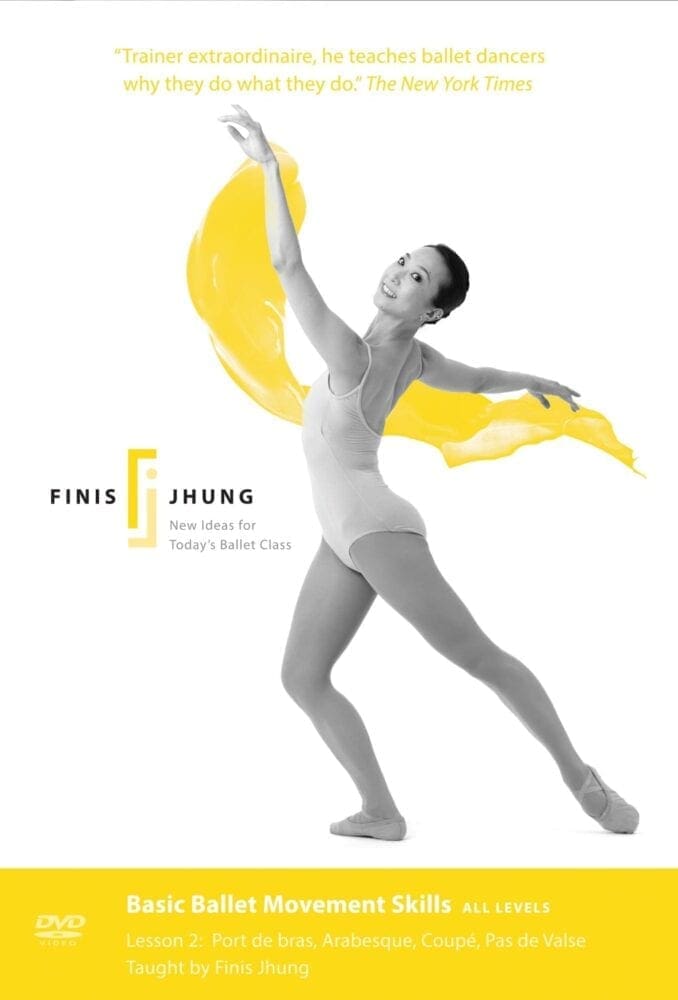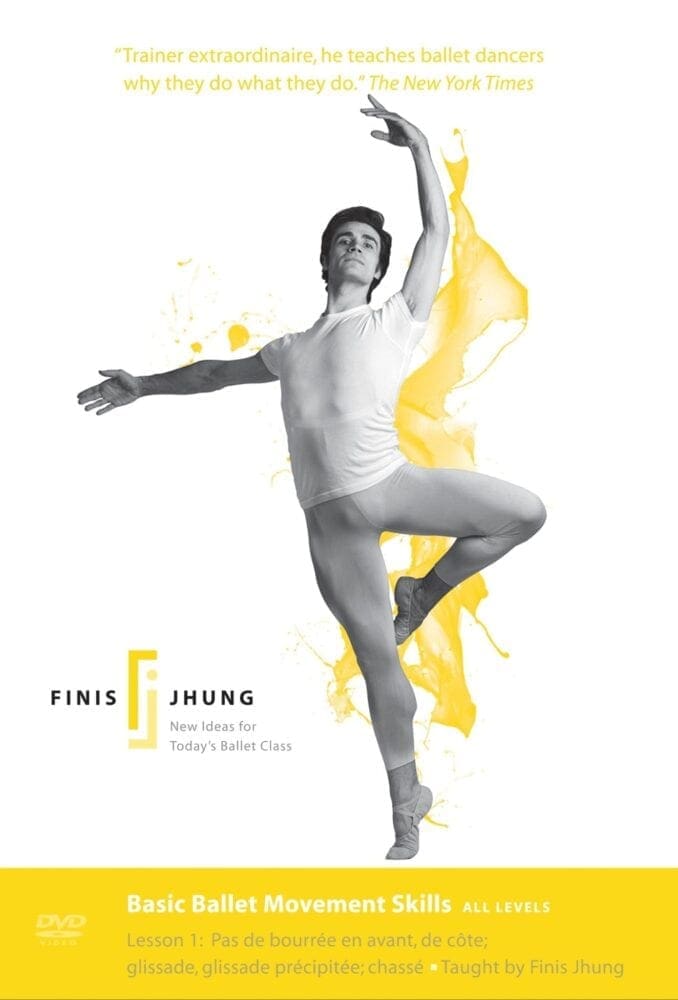You’re always stretched up and standing tall in Number 1, but when you plié-relevé there is a distinct difference in how you move and look according to the way you do it. Here’s how to get the feeling of making your plié relevé correctly. Stand in front of a wall, arms-length away, place both hands on the wall, and lean in so both elbows are bent. Slowly push yourself away from the wall. Your elbows straighten because you push the wall. Continue pushing until your hand leaves the wall and you are pushing the wall with just your fingertips. In the same way, your legs straighten when you relevé because you are pushing down on the floor. Driving down in order to go up—pushing down to relevé—instead of trying to pull yourself up—sends your weight down into the floor and gives you better balance and fluidity of movement. Try it.
The Finis Jhung Blog

Balance Your First Arabesque
The beauty of the arabesque depends on the correct placement of the head. The head must be centered on a high chest with energy going up the back of the neck. Stand in front of the mirror in first arabesque on the right foot. Your left arm is in second position, your right arm is extended forward defining the first arabesque position. Do not tilt your head to the right towards your right shoulder and arm. This is why you fall off forward when you attempt a piqué arabesque (stepping directly on the half-toe). When you pose in arabesque on your right foot, use your left arm for balance. Reach out and towards the back with your left arm as you extend your R arm forward. Keep your shoulders level with the floor as you press down on the air with both arms. Standing on the right foot, think of listening to the music with your left ear. The rule of balance: Ears Back!

Falling Over?
If you’re stumbling over your feet as you dance forward (pas de bourrée, piqué, tombé, chassé) it’s because you are leaning over your feet. Keep your head and chest high and reach back with your shoulders and arms. Think OPPOSITION: feet and legs forward; Ears, shoulders and at least one arm backward.
https://finisjhung.com/shop/basic-ballet-movement-skills-lesson-1/
#bigpicture #lifeisajourney #infinitepossibilities #fjballettechnique
Plié-relevé correctly:
Keep your focus on the sequential action of your foot. Your body should already be placed over the supporting toe when you complete the demi-plié. Keep the supporting thigh and knee placed—do not pull them back towards your heel—press down on the floor so that your foot rolls through the arch to the half-toe. Keep pressing the ball of your foot and toes against the floor until you stand straight on your standing leg. Let your weight drop through your bones all the way down into the floor. Enjoy the security of balancing solidly on one foot on releve!
SOMETHING TO THINK ABOUT
LOOK BETTER
Always show the transitions between steps clearly. Articulate the movement by reaching with your legs and arms. Show how you are always balanced completely on one foot before stepping to another. This creates your body line and gives interest and value to your movements.
opposition
You’ll have better control of your movements if you always use opposition through your upper body. When you dance to the right, reach back to the left with your supporting arm and shoulder. Don’t look where you are going – look away – use the textbook body positions when you are working in fourth position front and you will look better and move more quickly.
DANCE BETTER:
To balance your fondu relevé: Think of it as a PUSH UP, not a PULL UP
LIFE LINE
Just because it’s always been done “that way” doesn’t mean it can’t be done “this way”
BALLET TECHNIQUE
DANCE WITH YOUR FEET & PUSH THE FLOOR. When you turn, be sure to roll through all your toes. When you jump, be sure to rely on the pushing foot, not the brushing foot.

